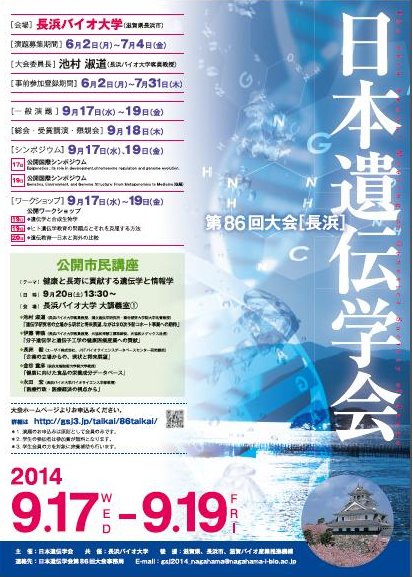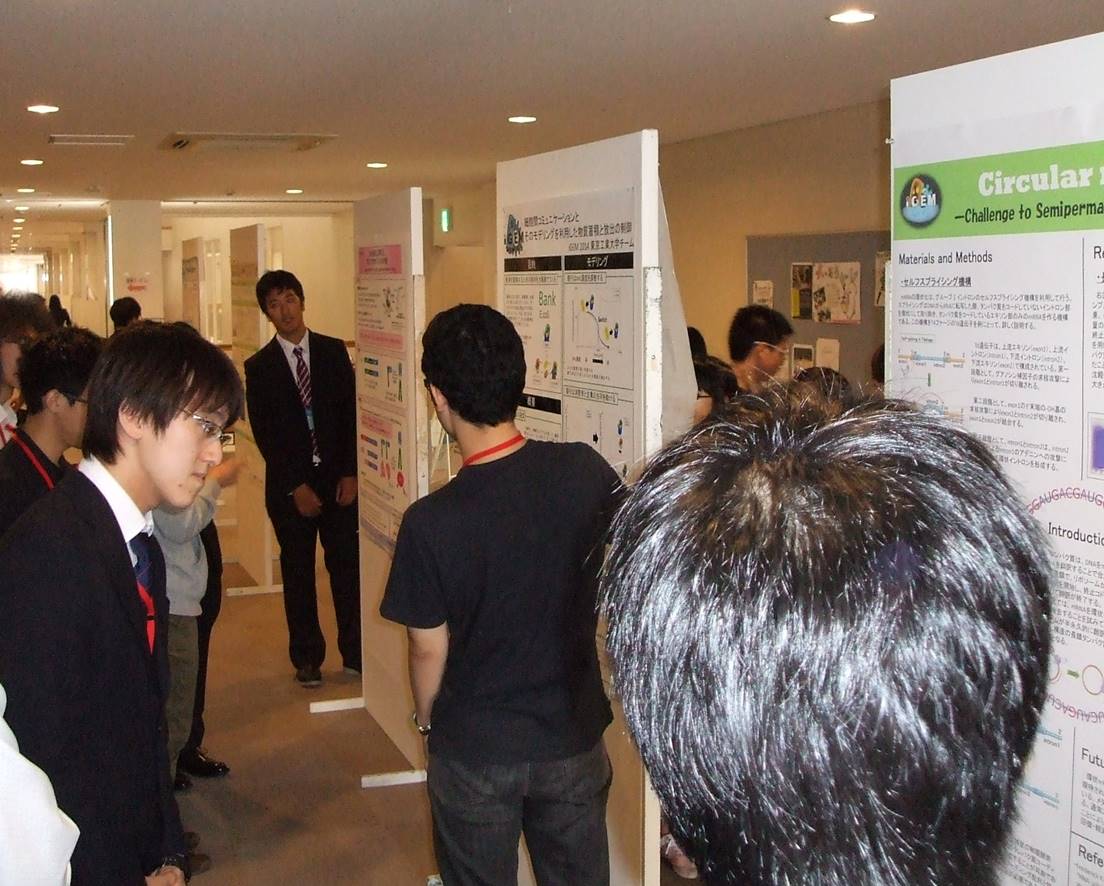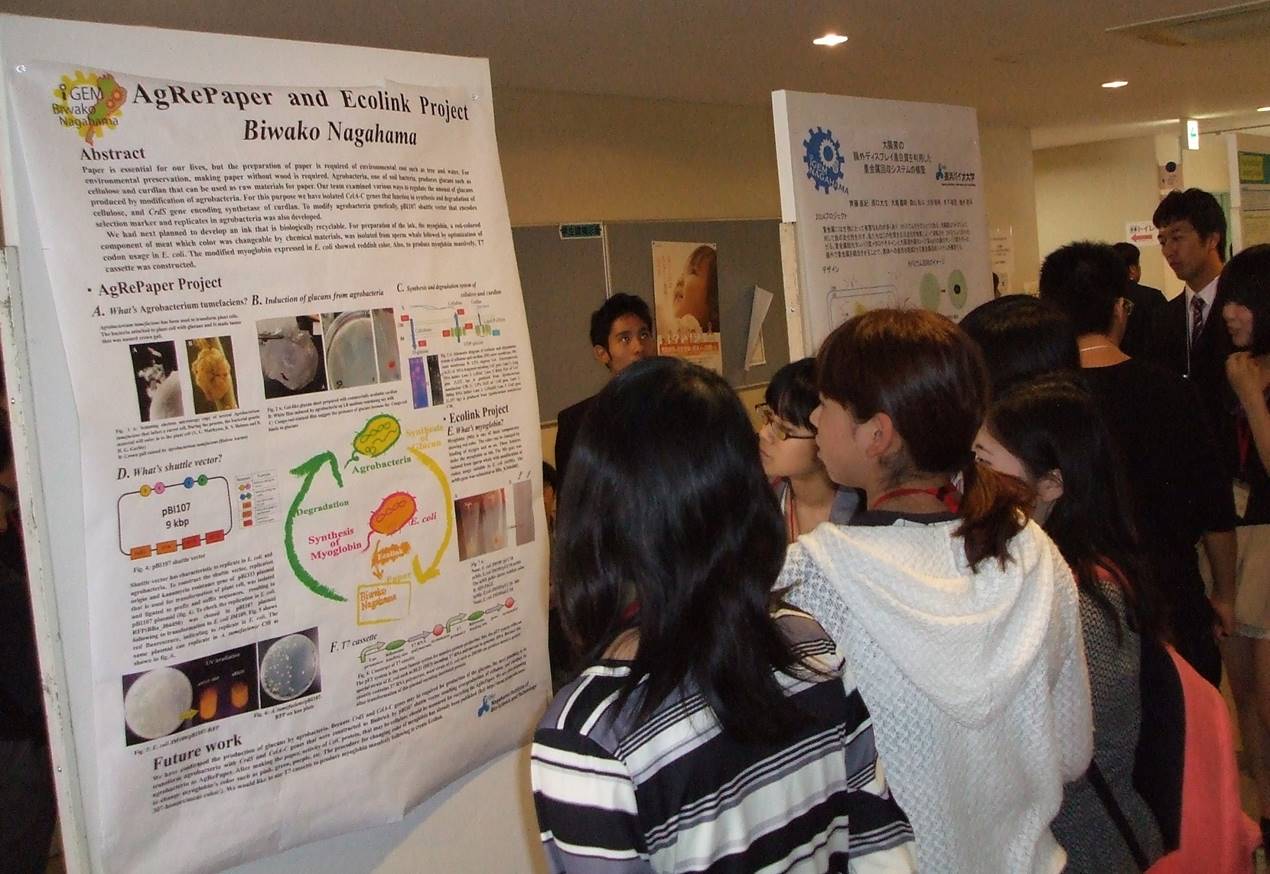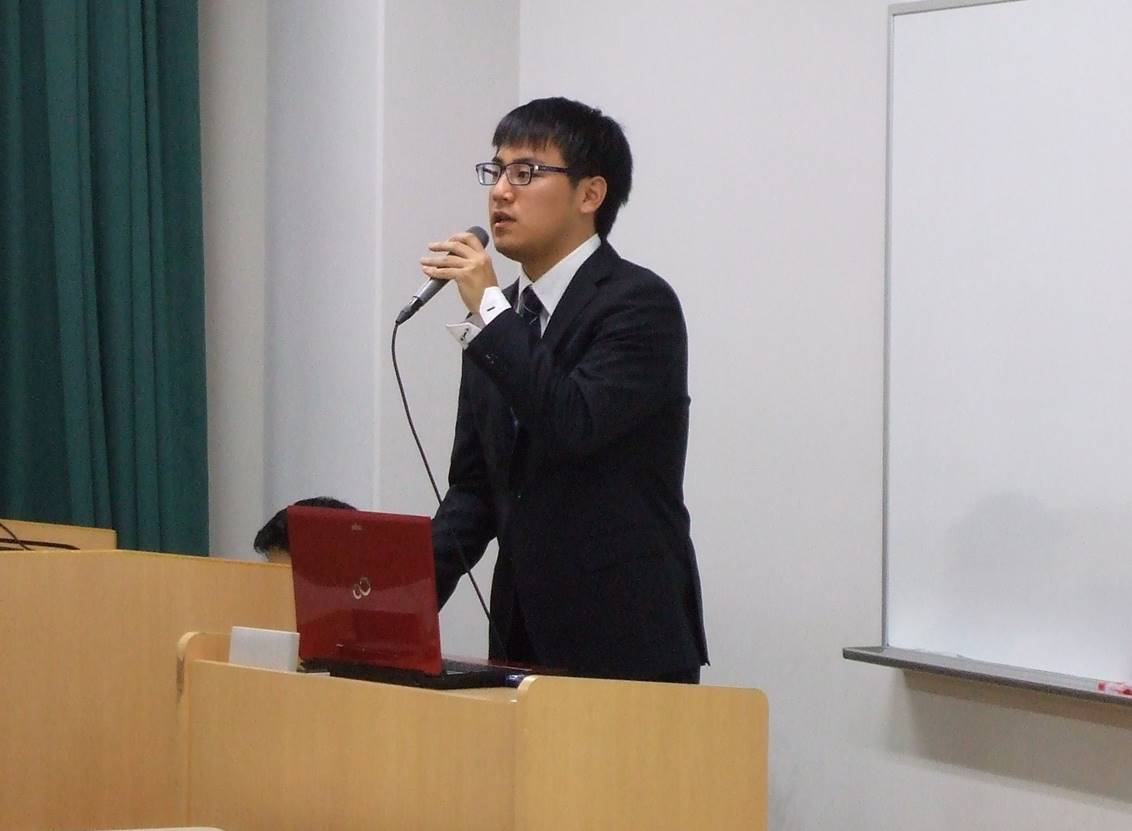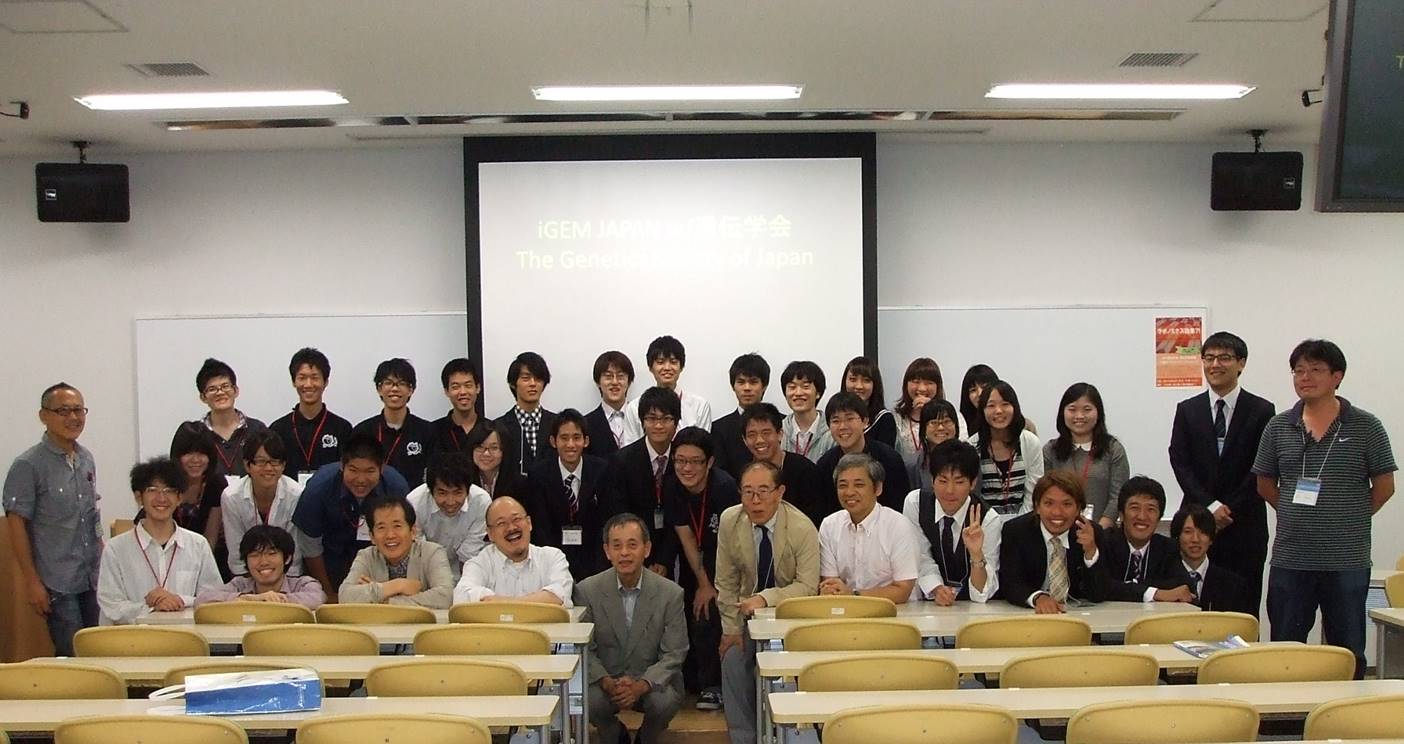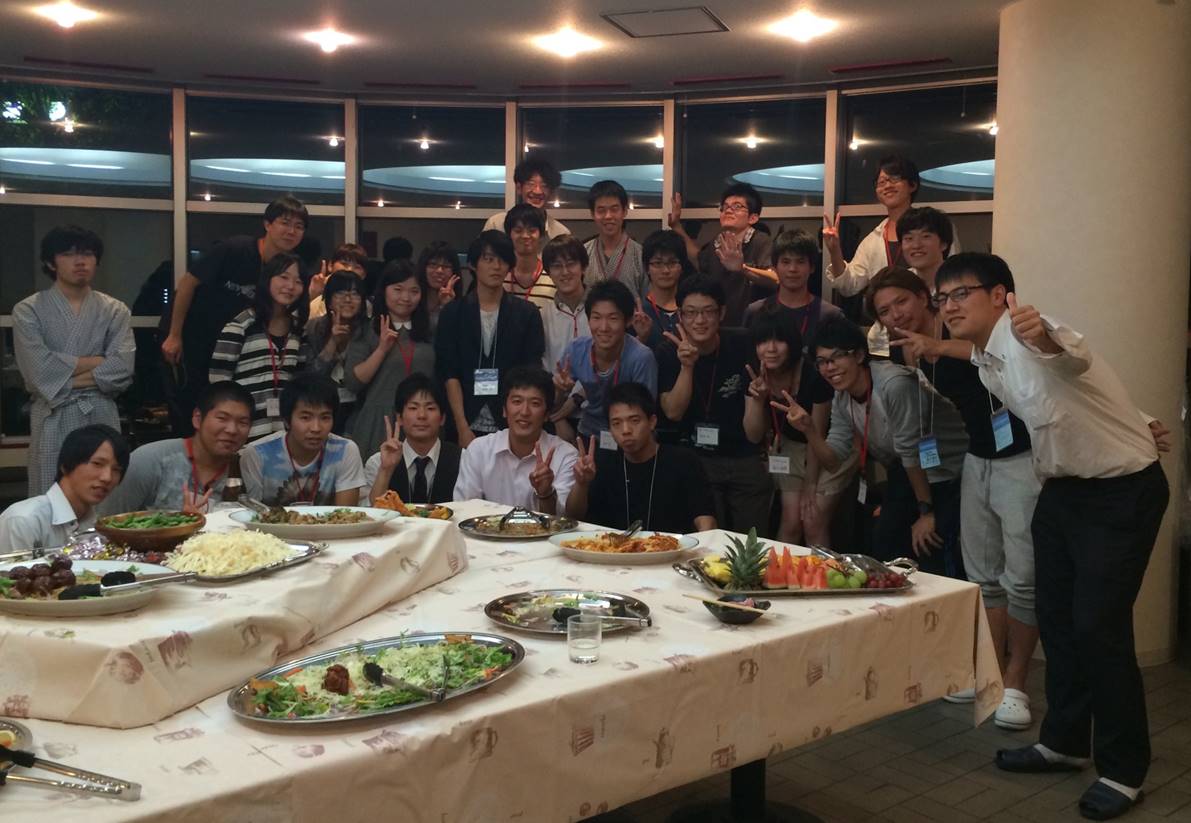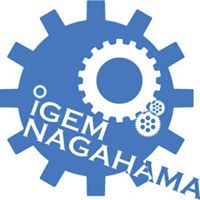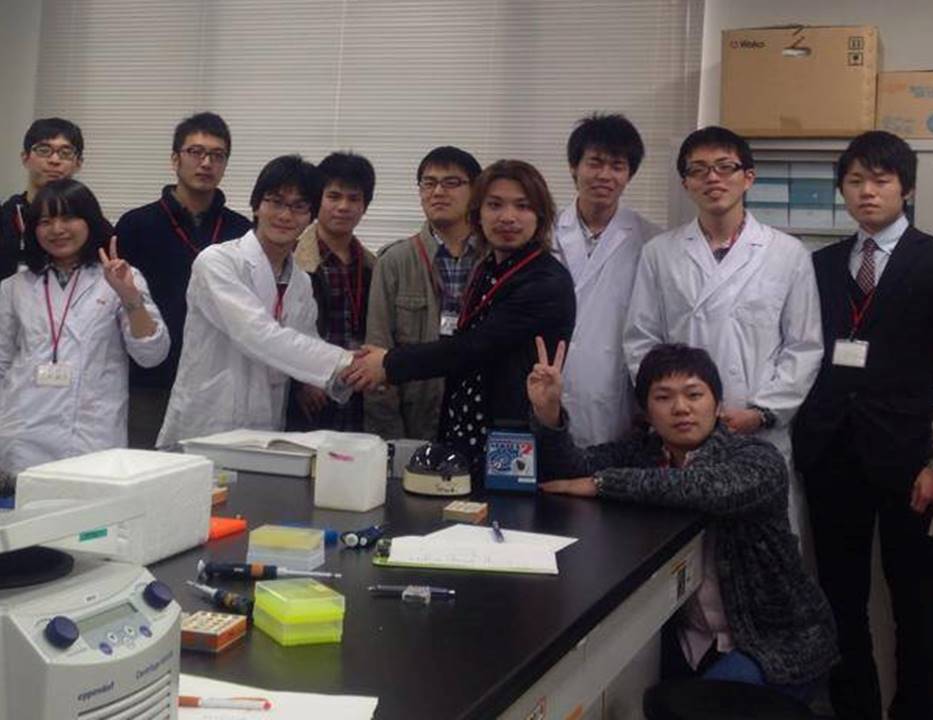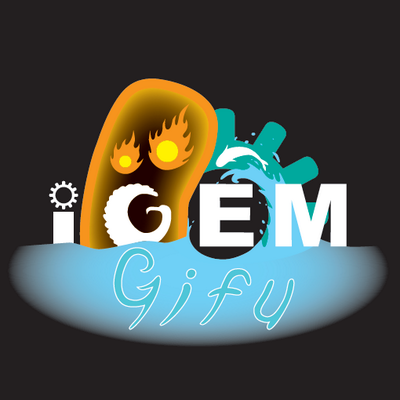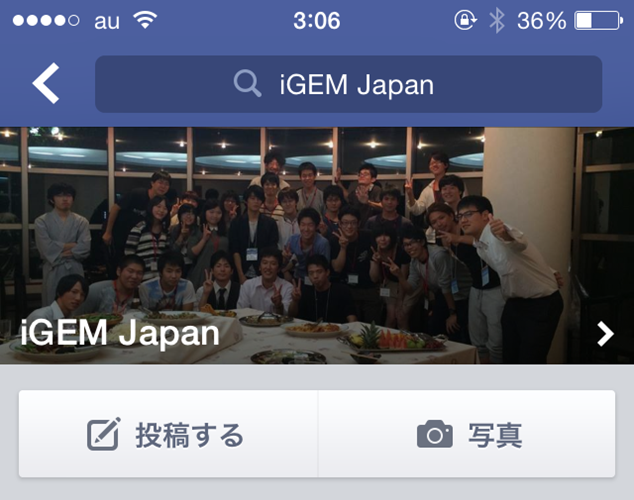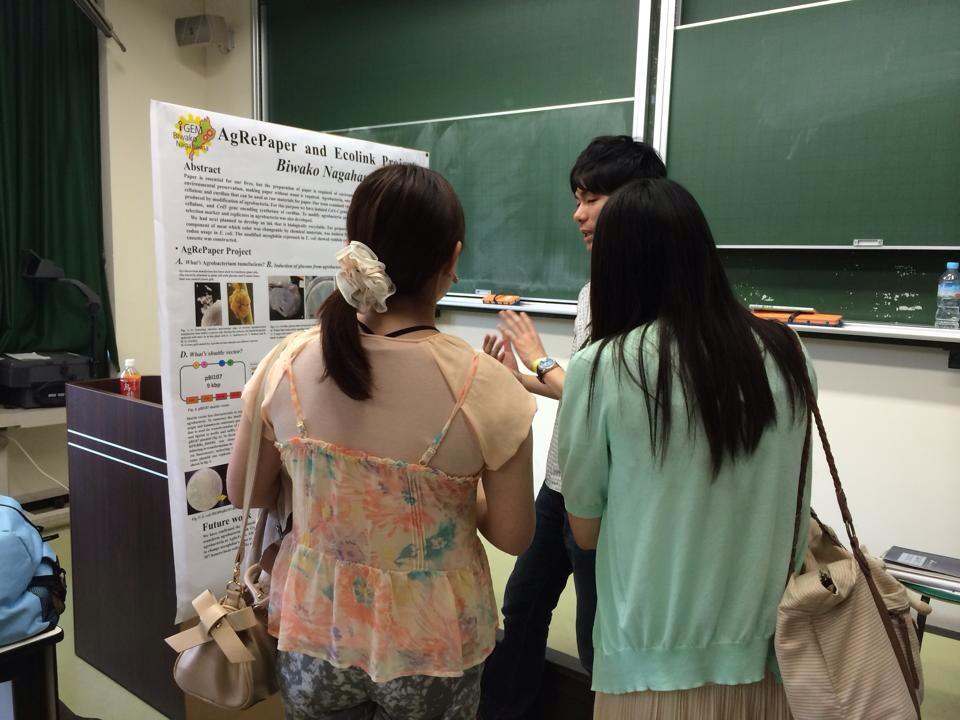Team:Nagahama Policy & Practice
From 2014.igem.org
(→Nagahama Meetup) |
(→Frashman opinion by Takuho Otsubo) |
||
| (11 intermediate revisions not shown) | |||
| Line 72: | Line 72: | ||
==Question:<br>On a region polluted by the Heavy Metal,<br>Should we use ''E. coli'' designed by iGEM Nagahama?== | ==Question:<br>On a region polluted by the Heavy Metal,<br>Should we use ''E. coli'' designed by iGEM Nagahama?== | ||
| - | === | + | ===Frashman opinion by Moriyama Takuto=== |
| - | We thought how to use ''E.coli'' designd by our team. We must not take out transgenic organisums out side of laboratory. It controlled by Law Concerning the Conservation and Sustainable Use of Biological Diversity through Regulations on the Use of Living Modified | + | We thought how to use ''E.coli'' designd by our team. We must not take out transgenic organisums out side of laboratory. It controlled by Law Concerning the Conservation and Sustainable Use of Biological Diversity through Regulations on the Use of Living Modified Organisms. |
If we use this transgenic ''E.coli'', we should tell the necessity of it. | If we use this transgenic ''E.coli'', we should tell the necessity of it. | ||
| - | It is important to tell the necessity of transgenic | + | It is important to tell the necessity of transgenic organisms for develop synthetic biology. We should to learn risk of transgenic organisms. |
| - | === | + | ===Frashman opinion by Takuho Otsubo=== |
| + | |||
| + | I thought that we should not use ''E.coli'' designd by our team.<br> | ||
| + | this ''E. coli'' can catch cadmium.<br> | ||
| + | And we may reduce pollution with cadmium by collecting this ''E. coli''.<br> | ||
| + | However, there can be the risk leading to threatening ecosystem to use genetically-modified ''E. coli''.<br> | ||
| + | It is important to check pollution of cadmium.<br> | ||
| + | However, I thought that it is more important that I not threaten ecosystem.<br> | ||
| + | Therefore I am against using ''E.coli'' designd by our team which may threaten ecosystem. | ||
===Team opinions=== | ===Team opinions=== | ||
| Line 130: | Line 138: | ||
We thought that we organize many opportunity of discussion about synthetic biology with people having various background. People doesn’t have accurate knowledge about Syntheticbiology. For example, the result of recombinant genes and synthetic organisms which have new abilities. These situations have difficulty in discussing important problems, such as a question about ethics or safety. We participate in [https://2014.igem.org/Meetups The 86th Annual Meeting of The Genetics Society of Japan at Nagahama Institute of Bio-Sience and Technology in September 17th-20th, 2014]. We proposed the workshop of synthetic biology and invited general public, iGEM Teams, researchers and instructors of synthetic biology there, because we wanted to know and learn relation of synthetic biology and society. iGEM Teams conducted a presentation and did a poster session about synthetic biology. We had instructors of synthetic biology give us a lecture about the acts of recombining genes and producing organisms which have new abilities. We discussed the theme with audiences. We got different ideas. Synthetic biology had been strange for audiences who had had a negative image by its name. They understood our work and took interest in synthetic biology. Through this experiment, we really felt synthetic biology is not known widely. People wanted to know and to learn synthetic biology. We felt we have to consider bringing a new way. We set our question as below; how should we have interaction with people who are not part of scientific society as an organization of college student? We thought we should do various workshops and lecture young people synthetic biology. | We thought that we organize many opportunity of discussion about synthetic biology with people having various background. People doesn’t have accurate knowledge about Syntheticbiology. For example, the result of recombinant genes and synthetic organisms which have new abilities. These situations have difficulty in discussing important problems, such as a question about ethics or safety. We participate in [https://2014.igem.org/Meetups The 86th Annual Meeting of The Genetics Society of Japan at Nagahama Institute of Bio-Sience and Technology in September 17th-20th, 2014]. We proposed the workshop of synthetic biology and invited general public, iGEM Teams, researchers and instructors of synthetic biology there, because we wanted to know and learn relation of synthetic biology and society. iGEM Teams conducted a presentation and did a poster session about synthetic biology. We had instructors of synthetic biology give us a lecture about the acts of recombining genes and producing organisms which have new abilities. We discussed the theme with audiences. We got different ideas. Synthetic biology had been strange for audiences who had had a negative image by its name. They understood our work and took interest in synthetic biology. Through this experiment, we really felt synthetic biology is not known widely. People wanted to know and to learn synthetic biology. We felt we have to consider bringing a new way. We set our question as below; how should we have interaction with people who are not part of scientific society as an organization of college student? We thought we should do various workshops and lecture young people synthetic biology. | ||
| - | UT-Tokyo,[https://2014.igem.org/Team:Kyoto/Policy_and_Practice Kyoto],Osaka,[https://2014.igem.org/Team:HokkaidoU_Japan/About_Us#Acknowledgements Hokkaido_U],TMU-Tokyo,[https://2014.igem.org/Team:Tokyo_Tech/Policy_and_Practices Tokyo_Tech],[https://2014.igem.org/Team:Gifu/Human_Practice Gifu] | + | [https://2014.igem.org/Team:UT-Tokyo/CTCD/Content?page=Attribution-block UT-Tokyo],[https://2014.igem.org/Team:Kyoto/Policy_and_Practice Kyoto],Osaka,[https://2014.igem.org/Team:HokkaidoU_Japan/About_Us#Acknowledgements Hokkaido_U],TMU-Tokyo,[https://2014.igem.org/Team:Tokyo_Tech/Policy_and_Practices Tokyo_Tech],[https://2014.igem.org/Team:Gifu/Human_Practice Gifu] |
| Line 153: | Line 161: | ||
===Modeling support=== | ===Modeling support=== | ||
| - | We | + | We consigned modeling of our project by [https://2014.igem.org/Team:UT-Tokyo/CTCD/Content?page=Attribution-block&cont=Attribution-2 UT-Tokyo]. |
| - | [[File:Index_title.png]] | + | [[File:Index_title.png|500px]] |
== iGEM Japan == | == iGEM Japan == | ||
Latest revision as of 23:00, 17 October 2014
|
||||||||||||||
Contents |
Question:
On a region polluted by the Heavy Metal,
Should we use E. coli designed by iGEM Nagahama?
Frashman opinion by Moriyama Takuto
We thought how to use E.coli designd by our team. We must not take out transgenic organisums out side of laboratory. It controlled by Law Concerning the Conservation and Sustainable Use of Biological Diversity through Regulations on the Use of Living Modified Organisms. If we use this transgenic E.coli, we should tell the necessity of it. It is important to tell the necessity of transgenic organisms for develop synthetic biology. We should to learn risk of transgenic organisms.
Frashman opinion by Takuho Otsubo
I thought that we should not use E.coli designd by our team.
this E. coli can catch cadmium.
And we may reduce pollution with cadmium by collecting this E. coli.
However, there can be the risk leading to threatening ecosystem to use genetically-modified E. coli.
It is important to check pollution of cadmium.
However, I thought that it is more important that I not threaten ecosystem.
Therefore I am against using E.coli designd by our team which may threaten ecosystem.
Team opinions
We discussed the theme. We thought what problems it has and answered it.
Q-1) Risks to the safety and health of team members, or other people working in the lab
A-1) In our project, we does not use biological materials without E. coli and all DNA parts are already cloned in plasmid. We are only using DNA parts, such as synthesis of amino acid, that are not dangerous for human, so there are no safety and health risks.
Q-2) Risks to the safety and health of the general public (if any biological materials escaped from your lab)
A-2) We only use E. coli JM109 and E. coli DH5α encoding extra DNA parts that are originated fromE. coli and in Spring 2014 Distribution. These organisms are derived from E. coli K-12 strain that belong to Risk group 1. So we think that these organisms have no risks to the safety and health of the general public.
Q-3) Risks to the environment (from waste disposal, or from materials escaping from your lab)
A-3) We are using only E. coli JM109 and E. coli DH5α. They belong to B1 level in biological safety in Japan, and can’t live in nature. So if they escape from our lab, there is no risk to the environment.
Q-4) Risks to security through malicious miss-use by individuals, groups, or countries
A-5) All E. coli and DNA parts are stored in private refrigerators for our project, and the refrigerators have been locked when we do not use them.
Q-5) What measures are you taking to reduce these risks? (For example: safe lab practices, choices of which organisms to use.)
A-5) As described above, we only use B1 level E. coli in our project and all biological materials are autoclaved before waste according to our institute rule.
Q-6) What new risks might arise from your project's growth? (Consider the categories of risk listed in parts a-d of the previous question: lab workers, the general public, the environment, and malicious miss-uses.) Also, what risks might arise if the knowledge you generate or the methods you develop became widely available?
A-6) We are planning to make two strains of transgenic E. coli. One has characteristics to release asparatic acid after addition of cadmium ion, resulting to collect other E. coli. The other one can trap cadmium ion outside the bacteria. When both transgenic E. coli will be used in natural field, the former might attract other bacteria and microorganisms to the cadmium-containing area, resulting to pollution of the organisms, and the latter has high concentration of cadmium ion outside the bacteria, resulting to bioaccumulation of cadmium in the predator of the transgenic E. coli.
Q-7) Does your project currently include any design features to reduce risks? Or, if you did all the future work to make your project grow into a popular product, would you plan to design any new features to minimize risks? (For example: auxotrophic chassis, physical containment, etc.) Such features are not required for an iGEM project, but many teams choose to explore them.
A-7) In our project, we have used JM109 strain of E. coli, a derivative of K-12 strain encoding auxotrophy, which cannot grow in natural field. In case of future use, the transgenic E. coli will be used under supplication of required nutrition, so they cannot grow outside the experimental field. Also, if this two strain system for collection and attraction of cadmium ion will be used for other organisms, we must select the organisms not to be involved in bioaccumulation of cadmium.
Sammary
According to the above results, We concluded to use it, because it doesn’t have serious risk at present. We thought E.coli left environment may damage us, because we thought we design E.coli to be able to collect it. We conducted these ideas by oral presentation and oral poster session in The 86th Annual Meeting of The Genetics Society of Japan at Nagahama Institute of Bio-Sience and Technology in September 17th-20th, 2014 . We got some ideas from audiences. We have been considered from these ideas. We felt the theme is difficult and complex. We clean regions polluted by the heavy metal ion by using E.colis designed by iGEM Nagahama.
Nagahama Meetup
We think ethics and safety on iGEM projects. iGEM Nagahama decided to do human practices to know synthetic biology. We thought that we organize many opportunity of discussion about synthetic biology with people having various background. People doesn’t have accurate knowledge about Syntheticbiology. For example, the result of recombinant genes and synthetic organisms which have new abilities. These situations have difficulty in discussing important problems, such as a question about ethics or safety. We participate in The 86th Annual Meeting of The Genetics Society of Japan at Nagahama Institute of Bio-Sience and Technology in September 17th-20th, 2014. We proposed the workshop of synthetic biology and invited general public, iGEM Teams, researchers and instructors of synthetic biology there, because we wanted to know and learn relation of synthetic biology and society. iGEM Teams conducted a presentation and did a poster session about synthetic biology. We had instructors of synthetic biology give us a lecture about the acts of recombining genes and producing organisms which have new abilities. We discussed the theme with audiences. We got different ideas. Synthetic biology had been strange for audiences who had had a negative image by its name. They understood our work and took interest in synthetic biology. Through this experiment, we really felt synthetic biology is not known widely. People wanted to know and to learn synthetic biology. We felt we have to consider bringing a new way. We set our question as below; how should we have interaction with people who are not part of scientific society as an organization of college student? We thought we should do various workshops and lecture young people synthetic biology.
UT-Tokyo,Kyoto,Osaka,Hokkaido_U,TMU-Tokyo,Tokyo_Tech,Gifu
Collaborate with other iGEM teams!
Metallothionein
We collaborate with Gifu team. We eliminated BBa_K519010's PstI site. And we send this improved part to Gifu team.
https://2014.igem.org/Team:Gifu/Human_Practice
Modeling support
We consigned modeling of our project by UT-Tokyo.
iGEM Japan
We discussed iGEM JAPAN’s future initiative at this meeting. Setting up iGEM JAPAN was committed to making it easier for iGEM teams to communicate with each other. However, the interactions between the iGEM teams have been decreasing recently, and the only event that iGEM teams gather together this year is the meetup held at Tokyo Metropolitan University in August. We had to seek a solution for this problem. At this meeting in Nagahama, iGEM JAPAN created a Facebook page and a group of LINE. Our future plan is to make a website directed toward the outside.
School festival at the Universtiy of Tokyo
We took part in School festival at the Universtiy of Tokyo on May 18th. We did a poster session about synthetic biology. People doesn’t have accurate knowledge about Syntheticbiology. Synthetic biology had been strange for audiences who had had a negative image by its name Though this event, we wanted audiences to know synthetic biology. They heard us a lot of questions of synthetic biology. Audiences were interested in synthetic biology.
 "
"

